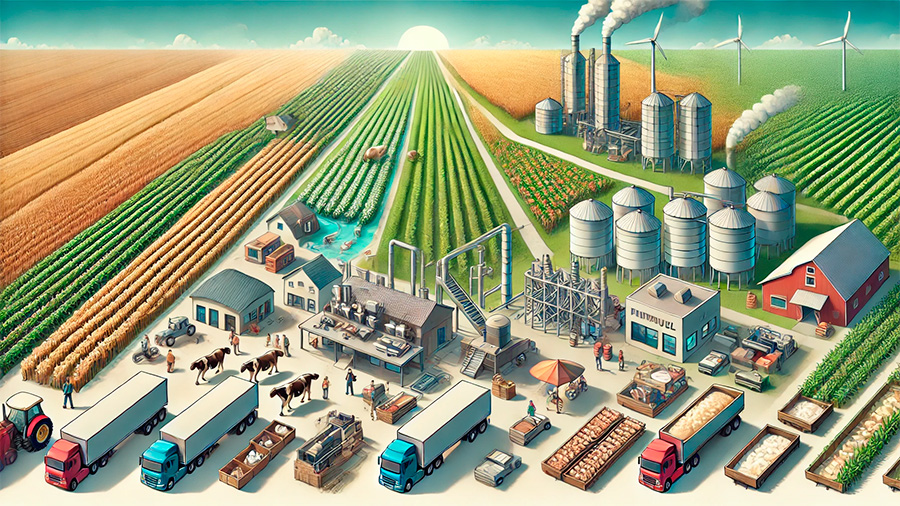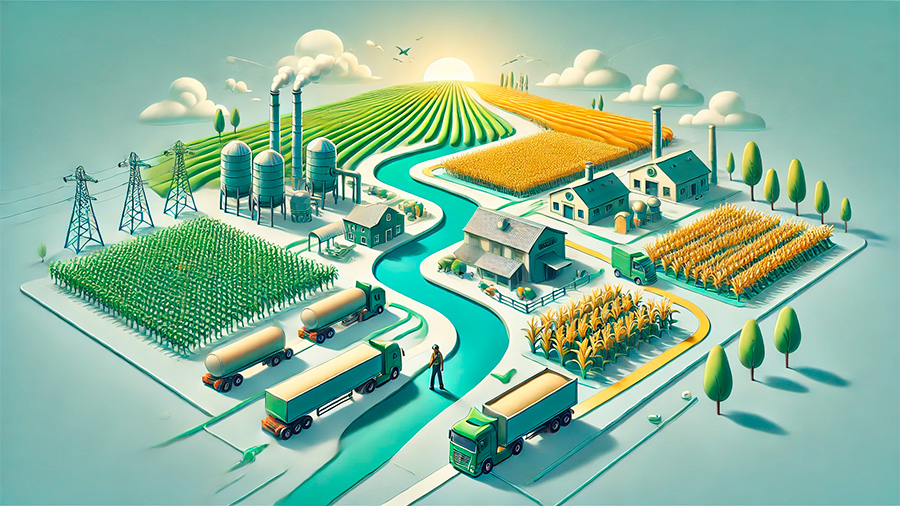Transitioning from traditional farming to agribusiness is a crucial step for farmers looking to expand their operations and increase profitability. While farming primarily focuses on growing crops or raising livestock, agribusiness encompasses the entire supply chain, including processing, distribution, and retail. By transitioning into agribusiness, farmers can take control of more stages in the production process, capture additional value, and diversify their revenue streams.
This article outlines the steps farmers can take to transition into agribusiness, including expanding operations into processing, building a distribution network, and exploring retail opportunities.
Understanding the Difference Between Farming and Agribusiness
Before making the transition, it’s important to understand the fundamental differences between farming and agribusiness. Farming involves the production of raw agricultural goods, such as crops and livestock. Agribusiness, on the other hand, extends beyond production to include the processing, packaging, distribution, and retailing of those goods. By transitioning to agribusiness, farmers can become involved in more stages of the supply chain, allowing them to capture greater value from their products.
1. Moving Beyond Raw Production
In traditional farming, revenue is generated solely from selling raw products like fruits, vegetables, or livestock. Agribusiness allows farmers to add value by processing these raw products into finished goods. For example, a farmer who grows tomatoes can transition into agribusiness by starting a business that produces tomato sauce or canned tomatoes. By doing so, the farmer increases the value of the product and can command higher prices.
How agribusiness adds value:
- Product differentiation: Processing raw products allows farmers to create unique, branded goods that stand out in the market.
- Higher profit margins: Finished products, such as packaged food items, typically sell for higher prices than raw commodities.
2. Expanding Into Multiple Revenue Streams
Agribusiness enables farmers to diversify their revenue streams by engaging in multiple parts of the supply chain. In addition to production, farmers can participate in processing, packaging, and even retail. This diversification helps mitigate the risks associated with fluctuations in commodity prices or crop yields, providing a more stable and sustainable income.
Key benefits of diversifying into agribusiness:
- Reduced dependency on raw product sales: By adding value to raw products, farmers can earn more consistent income even during poor harvest seasons.
- Access to new markets: Agribusiness opens the door to retail and wholesale markets, providing additional opportunities for growth.

Steps to Transition from Farming to Agribusiness
Successfully transitioning from farming to agribusiness requires careful planning, investment, and a strategic approach. Below are the key steps farmers can take to expand their operations into agribusiness.
1. Identify Value-Added Opportunities
The first step in transitioning to agribusiness is identifying value-added opportunities that align with your existing farming operations. Consider what products can be developed from your raw materials and what markets exist for those products. For example, if you produce dairy, you could expand into cheese or yogurt production. If you grow wheat, you could start a business that produces flour or baked goods.
How to identify value-added opportunities:
- Evaluate current production: Look at the raw products you’re already producing and explore ways to process or package them for greater value.
- Research market demand: Identify consumer trends and market needs for processed or packaged goods related to your farming products.
2. Invest in Processing Equipment and Facilities
Once you’ve identified your value-added opportunities, the next step is to invest in the necessary equipment and facilities for processing. This may involve purchasing machinery for food processing, building storage facilities, or acquiring packaging equipment. Securing the right tools and infrastructure is essential for turning raw materials into finished goods.
Steps to invest in processing:
- Determine equipment needs: Based on the value-added product you plan to create, identify the processing equipment required to scale production.
- Explore financing options: Consider applying for agricultural loans, grants, or government programs to help finance the investment in processing equipment.
3. Develop a Distribution Network
Transitioning to agribusiness means that you’ll need to get your finished products to market. Developing a strong distribution network is crucial for expanding your reach beyond local markets and tapping into regional or national markets. This may involve partnering with distributors, building relationships with retailers, or setting up e-commerce platforms to sell directly to consumers.
How to build a distribution network:
- Partner with distributors: Work with wholesale distributors who can help get your products into stores, restaurants, or supermarkets.
- Leverage e-commerce: Set up an online store to sell your products directly to consumers, expanding your market reach and increasing profitability.
4. Explore Retail Opportunities
Another aspect of agribusiness is retailing your products directly to consumers. This can be done through farmers markets, specialty stores, or your own retail location. Direct-to-consumer sales allow you to establish a brand and build customer loyalty, which can lead to higher sales and margins. Retailing also gives you more control over pricing and product presentation.
How to enter the retail market:
- Participate in farmers markets: Farmers markets provide a great opportunity to sell your products directly to local consumers and receive immediate feedback.
- Open a retail location: If you’re ready to expand further, consider opening a small retail store or a farm shop where customers can buy your products directly.

The Benefits of Transitioning to Agribusiness
Transitioning from farming to agribusiness offers several significant benefits. In addition to increasing profitability, agribusiness allows farmers to diversify their operations, reduce risks, and capture more value from their production. By expanding into processing, distribution, and retail, farmers can create more stable and sustainable businesses that are less dependent on market fluctuations and commodity prices.
1. Increased Profitability
One of the primary benefits of agribusiness is increased profitability. By adding value to raw products through processing and branding, farmers can command higher prices for their goods. Additionally, engaging in multiple stages of the supply chain enables farmers to capture more of the profit margins associated with production, processing, and retail.
How agribusiness increases profitability:
- Higher prices for finished goods: Processed and branded products typically sell for higher prices than raw commodities.
- Greater control over margins: By participating in processing and retail, farmers can capture more of the profit margin at each stage of the supply chain.
2. Diversified Income Streams
Agribusiness provides farmers with diversified income streams, reducing their dependence on a single source of revenue. In addition to selling raw products, farmers can generate income from processed goods, retail sales, and distribution. This diversification helps mitigate risks associated with unpredictable weather, market volatility, or crop failure.
Benefits of diversifying into agribusiness:
- Reduced risk: Diversifying income streams helps farmers weather fluctuations in market prices or production challenges.
- Consistent cash flow: Agribusiness operations generate more consistent income by tapping into different segments of the market.
Conclusion
Transitioning from farming to agribusiness is a strategic move that allows farmers to expand their operations, increase profitability, and reduce risk. By identifying value-added opportunities, investing in processing, building a distribution network, and exploring retail options, farmers can take control of more stages in the supply chain and capture greater value from their products. The shift to agribusiness offers long-term sustainability and growth potential, making it an essential strategy for farmers looking to elevate their business to the next level.



